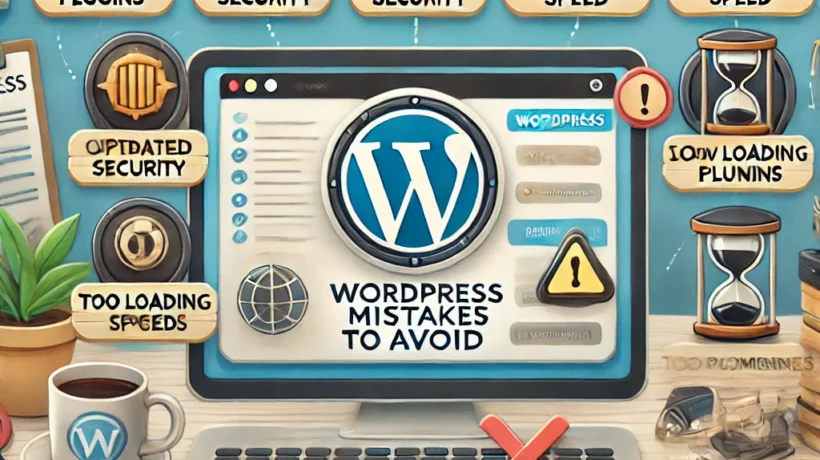Managing a WordPress website can be exciting, but even small mistakes can lead to performance issues or security risks. Here are some common WordPress mistakes I’ve encountered—and how you can avoid them!
1. Neglecting Regular Updates
WordPress core, plugins, and themes are frequently updated for performance improvements and security patches. Skipping updates can leave your site vulnerable to attacks.
Solution: Schedule regular maintenance and enable automatic updates for minor releases.
2. Using Too Many Plugins
Overloading your site with unnecessary plugins can slow it down and cause compatibility issues.
Solution: Audit your plugins periodically and remove the ones you don’t need. Prioritize lightweight and well-reviewed plugins.
3. Ignoring Website Backups
Not having a backup plan is risky—one crash or malware attack, and you could lose your entire site.
Solution: Use tools like UpdraftPlus or Jetpack to schedule regular backups. Always store a copy offsite.
4. Choosing the Wrong Theme
A bloated or poorly coded theme can hurt your site’s speed and user experience.
Solution: Opt for lightweight, mobile-friendly themes from reputable developers. Test with Google PageSpeed Insights before going live.
5. Weak Security Practices
Using “admin” as your username or weak passwords can open the door to hackers.
Solution: Use a strong password, enable two-factor authentication, and install a security plugin like Wordfence.
6. Not Optimizing for Speed
A slow website can frustrate visitors and hurt SEO rankings.
Solution: Compress images, use caching plugins (like WP Rocket), and choose a reliable hosting provider.
7. Skipping SEO Setup
Launching a site without proper SEO configuration means you’ll miss out on organic traffic.
Solution: Install an SEO plugin (like Yoast or Rank Math), and focus on optimizing meta tags, headings, and content.
8. No Mobile Optimization
With most users browsing on mobile, a non-responsive site can drive visitors away.
Solution: Test your site on multiple devices and ensure it’s mobile-friendly using tools like Google’s Mobile-Friendly Test.
9. Not Using a Staging Site
Making changes directly on a live site can lead to downtime or errors.
Solution: Always test updates or changes on a staging site before deploying them live.
10. Poor Hosting Choices
Cheap hosting may save money initially but can lead to slow load times and frequent downtimes.
Solution: Invest in reliable hosting providers that specialize in WordPress, like SiteGround, WP Engine, or Bluehost.
Takeaway:
WordPress is powerful, but avoiding these common mistakes will help ensure your site is fast, secure, and user-friendly. Whether you’re managing your own site or working on client projects, proactive maintenance is the key to long-term success.
What’s a WordPress mistake you’ve learned from? Let me know in the comments!





